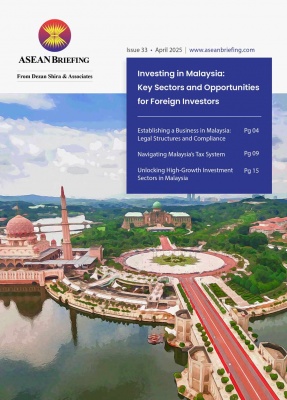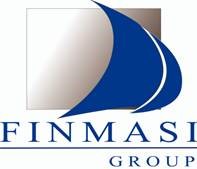
Our collection of resources based on what we have learned on the ground
The Greater Bay Area Initiative
Q&AValeria Manunza, assistant manager for Dezan Shira & Associates' Guangzhou, China office, discusses the Greater Bay Area Initiative and its significance to China's economy.
What is the Greater Bay Area?
The Greater Bay Area (GBA) is a project aimed at putting together Hong Kong, Macau and 9 cities of Guangdong’s Pearl River Delta, namely Guangzhou, Shenzhen, Dongguan, Foshan, Zhuhai, Zhongshan, Jiangmen, Huizhou, and Zhaoqin in a new economic region comparable to other city clusters such as the San Francisco Bay Area, Greater New York and the Greater Tokyo Area.
This project, which was first officially brought up in China’s 13th five-year plan (2016-2020), is an updated version of the Pearl River Delta Initiative, which did not include the two Special Administered Regions of Hong Kong and Macau.
The goal of the initiative is to strengthen cooperation among the cities designated in the plan and, by focusing on each city’s competitive advantage, create a system in which they all complement one another.
The blueprint for this Greater Bay Area plan was finally released by policymakers in the beginning of 2019. Supporting it are three key infrastructure projects.
The first is the recently inaugurated Hong Kong-Zhuhai-Macau Bridge, which opened in 2018 and significantly reduces travel times from Hong Kong to Zhuhai and Macau.
The second is the Express Rail Link, which also opened in 2018 and connects Hong Kong to Shenzhen and Guangdong, and subsequently to China’s vast high-speed rail network.
The third project, the Shenzhen-Zhongshan Corridor, is planned to be completed in 2024. It will be an eight-lane highway and will reduce the travel time between Shenzhen and Zhongshan/Jiangmen by approx. 30 minutes.
Once physically integrated, the region will be in a stronger position to achieve the two other important parts of the initiative: increasing the Chinese economy’s value adding capabilities and boosting internationalization, both of which are important for China’s next stage of economic development.
As part of this initiative, the following industries will play an important role in the area: advanced manufacturing, financial services, transport & logistics, trade, tourism and leisure.
Why should we pay attention to the Greater Bay Area?
The region is already China’s most internationally inclined region (and largest foreign trader), with Guangdong providing 23.5% of the nation’s total imports and exports. A business already established in the Pearl River Delta region will be able to expand its range and use the region as a springboard to shift towards a more international strategy.
The recent shift towards a service-based economy that China is experiencing, is mostly due to the cities belonging to this zone. Shenzhen for example is one of the world’s leading innovation centers. Since 2013, Shenzhen devoted more than 4% of its GDP to R&D projects, providing incentives on tax, housing and funding, with an aspirational aim of becoming the world’s innovation center. This push has resulted in the city becoming famous for its high-tech manufacturing opportunities, telecommunications, financial and logistics industries.
The Guangdong province is known to have a reliable and developed manufacturing base with established supply chains with the rest of the world. Guangdong has remained China’s biggest economy, with a GDP of over 7.9 trillion Yuan (US$ 1.17 Trillion), representing around 10% of China’s total GDP in the last few years.
International supply chains have bloomed in the region with its proximity to Hong Kong and as a destination for returning overseas Chinese, both helping to create an English language environment MNCs can feel comfortable in.
The agreement provides the chance of bringing Hong Kong and the Guangdong province closer together. Hong Kong has served for many years now as an intermediary between Mainland China and the rest of the world. However, with closer integration, Hong Kong’s high-quality infrastructure, financial and professional services combined with Guangdong’s lower cost of labor and availability of land could prove even more beneficial to businesses in the region.
Where are the business opportunities right now?
There are good opportunities for small local enterprises who consider the Belt & Road Initiative too daunting.
When looking at the region right now, we can already see that Hong Kong is known as a world financial center; Shenzhen is China’s “Silicon Valley” because of its innovation and startup culture; Guangzhou and Dongguan is known for manufacturing and as a logistics hub; while Macau and Zhuhai are known for leisure and tourism. The GBA allows for the further development of these industries through regional integration and government initiatives. For example, the completion of the above-mentioned key infrastructure projects makes it easier for middle-class consumers to escape to Macau and Zhuhai for the weekend.
The GBA is also emerging as the manufacturing destination of choice in automotive innovation and driverless vehicles. Shenzhen already hosts the world’s biggest automotive technology trade shows and exhibitions, and China is a strong leader in artificial intelligence (AI).
Business can expect to see opportunities in electronics, robotics, manufacturing, automotive, software, leisure entertainment, and petrochemicals continue or develop in this region as it becomes more integrated.
Additionally, businesses will also see advantages in moving to new development hotspots such as Zhongshan, Zhaoqing and Huizhou where rents and labor costs are lower than Shenzhen and Guangzhou.
What about future prospects for businesses operating in the Greater Bay Area?
At its current GDP, the Greater Bay Area would rank 12th in the world if it was a country. Even with the recent mainland slowdown, the GBA is still growing at twice the OECD average. There will be a threefold increase in GDP by 2030 – to reach about US$4.6 trillion. That would make it the highest earning Bay Area in the world, outstripping Tokyo and San Francisco.
Business incentives will increase as the national and regional governments try to create a fully integrated GBA and foster further growth in the region. With the recent Trade War-spurred discussions to open further industries up to foreign investment, combined with the Guangdong Free trade Zone, there will be more foreign businesses can take advantage of, including in targeted industries.
A huge advantage of this plan will be the closer integration of the mainland and Hong Kong. Thanks to its global environment, the ‘one country, two systems’, and developed infrastructure, Hong Kong serves as a gateway between the mainland and the world. There is potential for Hong Kong’s developed legal and financial system influencing the Pearl River Delta region in addition to encouraging quality standards that are aligned with those in the West. For example, the Hong Kong stock market offers a blueprint as well as a convenient source for both fundraising and talent. At the same time, Hong Kong can also utilize its international trading network to promote local products.
If governmental bodies can get in sync, the uniformity of laws and policies will be a boon to all those businesses that want to capitalize on the flexibility of the integrated region.
What are the challenges of eastablishing a business in the GBA?
Integration beyond physical infrastructure will be the main challenge as governments will have to work closely and sync together on a number of policies and initiatives, including immigration, currency and corporate tax rates. This might be particularly challenging for the ‘one party, two systems’, special administrative regions of Hong Kong and Macau.
Each city must refocus their energies to what has been deemed their competitive advantage, moving away from duplication and other low-value manufacturing. A successful project will only result from each city in the region prioritizing the Bay Area’s benefits over individual ones.
CONTACT US
< BACK TO LIBRARY
Subscribe to receive latest insights directly to your inbox
Subscribe NowOur Clients
Discover our esteemed global clients across diverse sectors. We believe in providing our clients with exceptional service and a commitment to being their partner for growth in Asia.
See what our clients say about us
































